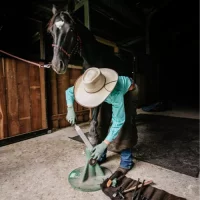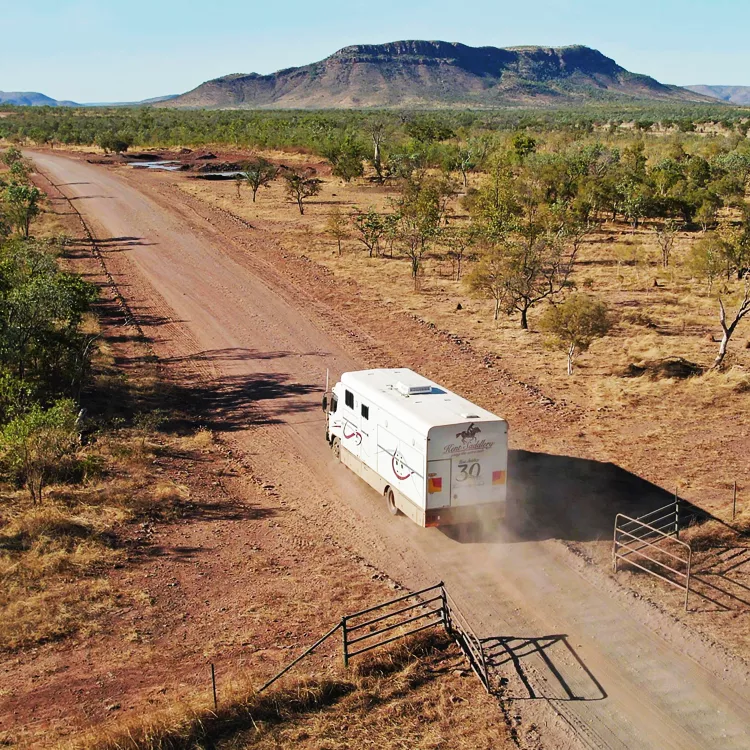Mustering – a return to horses
Mustering was traditionally done exclusively with horses until about thirty years ago when helicopters (choppers) became popular. Cattle which were accustomed to horse mustering were easily bluffed by the choppers. V-shaped hessian wings were used to channel the cattle into the yards. It seemed the way to go for a time until the cattle learned that by lying down or hiding under trees and bushes they could evade the helicopter. They also learned to hide as soon as they heard the noise of the approaching choppers.
Other disadvantages of chopper mustering straight into the yards became evident, as overheated cattle become obstinate and bull catching vehicles and other methods had to be introduced to assist with the muster. Because choppers often moved the cattle along more quickly, young calves were often left behind.
Chopper mustering of this type was at its most popular during the 1980s. Having learned from mistakes, choppers are now used more strategically; scouting the paddocks, particularly creeks and rough country and then heading the cattle towards the coacher mob held by horsemen. Light aeroplanes are also very useful for this purpose. Most stock camps also have one or two motorbikes which are used to scout for and bring cattle in. Choppers and pilots are generally hired on an hourly rate and move from station to station on a contract basis. Some of the larger stations have their own choppers. The blend of choppers, horses and motorbikes is usually determined by the type of country flat or hilly scrub, long grass or ant hills, and sometimes by the preferences of individual managers.
Stockmanship learned on horseback is invaluable to a ringer. Quite often the task of motorbike work is given to experienced stockmen who can effectively use their knowledge of cattle. Often motorbikes are used to scout the flank of the mob. Once the mob of cattle is brought together it can only move as fast as a horse, so the advantages of using horses are obvious.
During our yearly visits to cattle stations since 1991 we have seen a definite trend from choppers and bikes back to horses, with the odd exception. Of course, this suits us very well, as a major part of our business depends on the popularity of horse work. A lot of managers encourage the ringers to educate young horses and they then have the opportunity not only of using them in stock work, but of taking the horses to camp drafts to enter into competition. This encourages and builds self-esteem and confidence in the ringers, and a pride in their ability as efficient horse and stock handlers. Some of the larger companies also hold stock horse and rider challenges between their stations.















